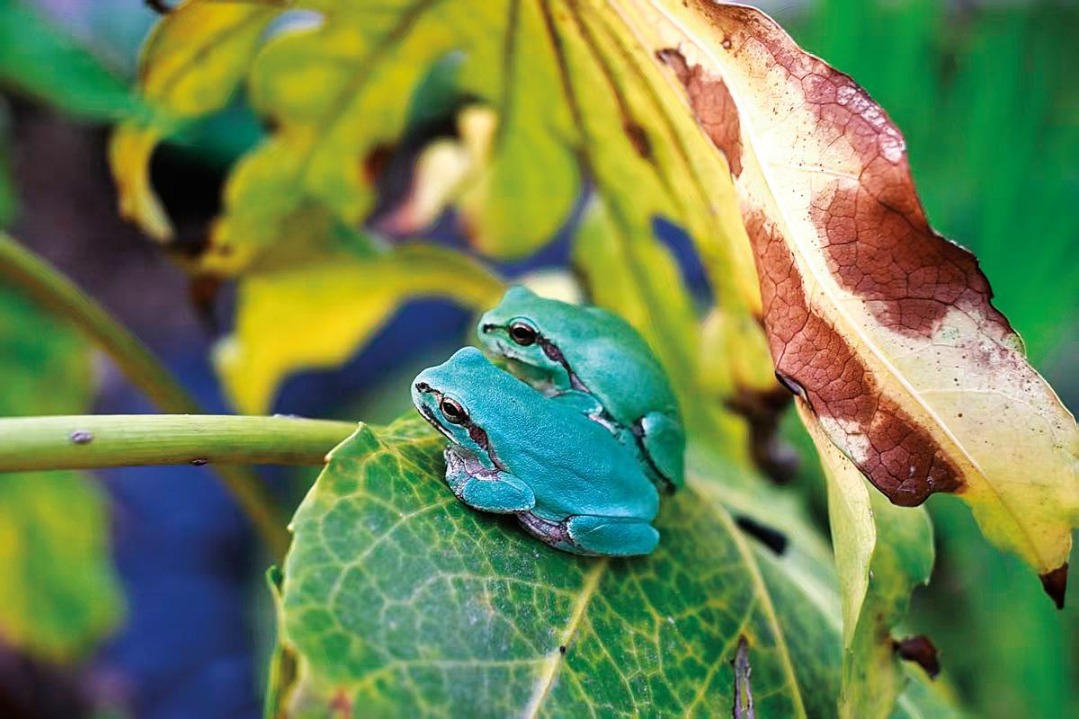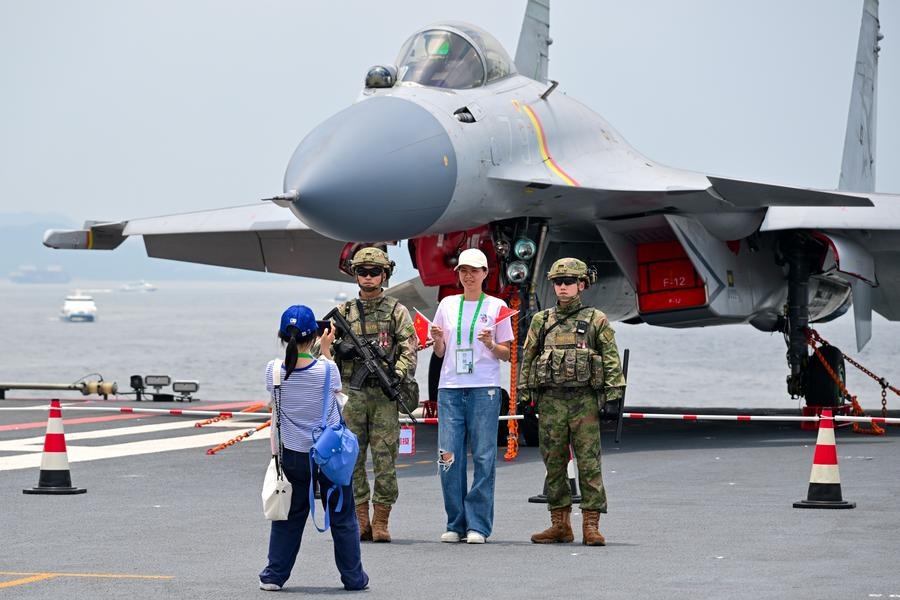Space sector set to rocket into future


Ambitious programs
In addition to their increased wealth, Chen and his fellow residents have witnessed a host of ambitious programs — including the country's permanent space station project — that have made China a rising space power.
All three major components of the Tiangong space station, now orbiting 400 kilometers above the Earth, were carried into space by a Long March 5B heavy-lift rocket model launched from Wenchang.
The first and most important part of the Tiangong station — the Tianhe core module — was launched in April last year, marking the beginning of a historic project that had been advocated by the nation's scientists since the 1980s.
Tianhe is 16.6 meters long and has a diameter of 4.2 meters. At 22.5 metric tons, the craft's weight is equal to that of 15 standard-size automobiles combined.
The module is bigger and heavier than any Chinese spacecraft launched before it.
Inside the craft, the astronauts have about 50 cubic meters in which to live and work, much more than the room available in any previous Chinese manned spacecraft. There are separate quarters for working, sleeping, personal hygiene, dining, healthcare and exercise.
The module also has appliances such as an air conditioner and a microwave oven, a refrigerator, a water dispenser and a treadmill.
In late July, Tiangong's first lab module, named Wentian, was launched to connect with the Tianhe section. Weighing 23 tons and 17.9 meters long, Wentian contains eight scientific cabinets. They are mainly used to serve biological and life science studies, and can also support research on the growth, aging and genetic traits of plants, animals and microbes in the space environment.
The exterior of the module has 22 extravehicular payload adapters capable of carrying the scientific equipment needed for experiments that require exposure to space, cosmic rays, vacuums and solar winds.
In addition to its scientific functions, Wentian serves as a backup control station to the Tianhe core module in case of emergency or malfunction. It has all the same flight control devices as those in the core module so the entire Tiangong station can be operated via Wentian if necessary.
The craft also has three separate sleeping quarters and an independent section for personal hygiene. They can be used in emergencies or for handovers by two crews.
In late October, the second lab module — named Mengtian — was hauled into space by a Long March 5B rocket to dock with the Tianhe. The addition of Mengtian marked the end of the in-orbit assembly process for the Tiangong station.
Mengtian, the world's largest single-body spacecraft now in active service, contains 13 scientific cabinets used for microgravity studies and experiments in fluid physics, materials science, combustion science and fundamental physics. It also carries 37 extravehicular payload adapters capable of bearing scientific experiments that need to be exposed to cosmic rays, vacuums and solar winds.
A major technical feature of Mengtian is that it can move scientific apparatus out of the Tiangong station without requiring any manual labor by the astronauts to conduct extravehicular experiments and bring them back again.
Moreover, the lab module is capable of sending miniature spacecraft, such as CubeSats, into orbit, the designers said.
So far, four teams of astronauts have lived and worked inside the Tiangong station, which now consists of the Tianhe core module, the Wentian and Mengtian lab capsules, the Shenzhou XV spacecraft and the Tianzhou 5 cargo ship.
The current crew — the three members of the Shenzhou XV mission — arrived at the station on Nov 30. They are scheduled to stay until May, when they will be relieved by the crew of Shenzhou XVI.
Serving as a national space-based platform for science and technology, Tiangong is expected to operate in orbit for more than 10 years, and will be open to astronauts from other countries in the near future, according to the China Manned Space Agency.
Starting next year, a third group of Chinese astronauts is scheduled to take part in flights, officials from the agency said. The 18 new astronauts — 17 men and one woman — are in three groups: seven spacecraft pilots, seven spaceflight engineers and four payload specialists.
They are currently undergoing systematic training at the Astronaut Center of China in Beijing before being certified for space missions. China had 21 astronauts in its first two generations. Of them, 16 took part in 10 flight missions, including the latest, Shenzhou XV.
Five members of the first generation who did not take part in any spaceflights during their service have already retired.
- Chinese-made robotic dog hits 10.3 m/s, rivals human sprinters
- Shanghai competition drives innovation in AI hardware, fintech, cybersecurity
- Shanghai summer school explores historic waterfront
- New, bilingual book on China's high-speed rail published
- China seeks to expand global influence of its railway innovations
- East China province raises emergency response level for Typhoon Danas





































